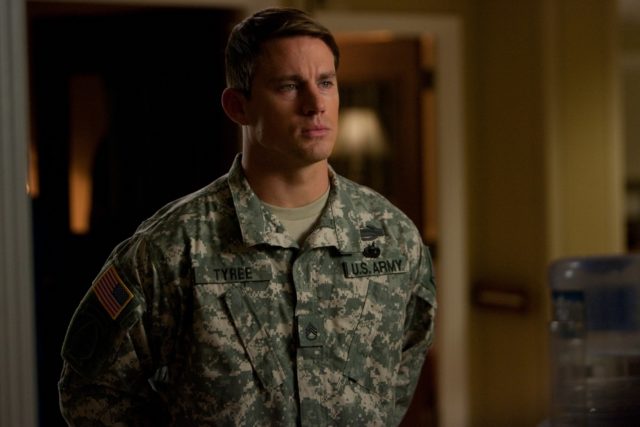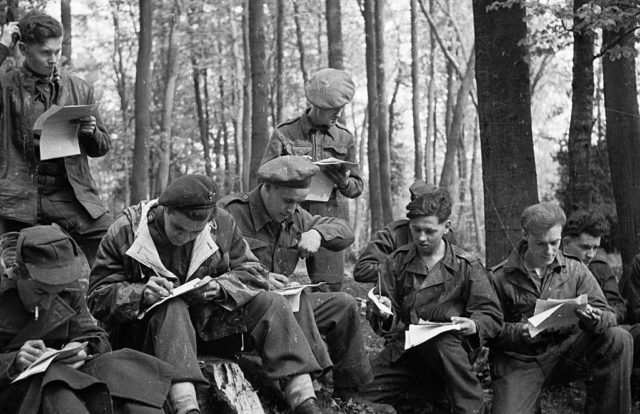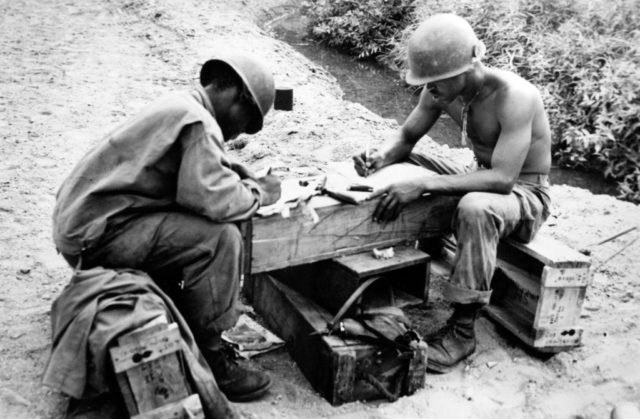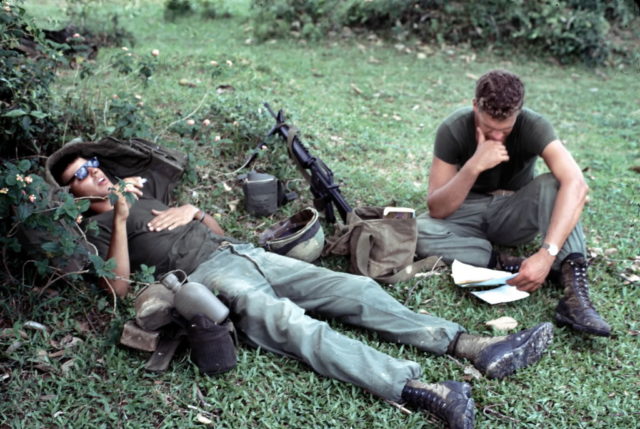Breaking up is tough. Breaking up during wartime? Even tougher. “Dear John” letters have gone from dreaded pieces of paper to emails and beyond. They sum up the end of a relationship between a service member and their beloved. Often taking place while one is overseas, the popular image is of a soldier cruelly discarded by a sweetheart back home, but are things that simple?
Let’s look at the history and impact of those two little words: “Dear John…”
There wasn’t a person named John
The name John is more emblematic than anything. There doesn’t appear to have been a guy called John who got his heart broken. Still, that devastating experience has been shared by many. As described by We Are The Mighty, “Dear John” letters start “with incoherent ramblings about how they miss their ‘John’ before ultimately saying they’re moving on.”

“Dear Jane” ensures servicewomen aren’t left out of the gut-wrenching loop.
These infamous letters reflect relationships during wartime
The letters arguably inflict deeper wounds than bombs and bullets. They also provide an insight into how relationships work in such extreme circumstances.

Military Times spoke to Susan L. Carruthers, a professor who authored the book Dear John: Love and Loyalty in Wartime America. The story of splits against the backdrop of world conflict was a subject that reportedly came to her unexpectedly. By studying archival correspondence, she got an overview of “how people then negotiated distance and separation.” Concepts like infidelity weren’t as clear cut as they seemed.
During World War II, the media insisted women support their fighting men abroad. However, the pressures on both sides was clearly immense. Carruthers noted how “challenging it is to make a relationship survive several years of separation spanning several continents.”
Simple words, but a complex picture
Another factor Carruthers noticed was technology. The “Dear John” phenomenon originally dished out its news by letter. We Are The Mighty writes that this type of mail formed a virtual wall of woe in the Second World War. Audio helped deliver the message in Vietnam, according to the Military Times.
As the 20th century drew to a close, there was constant communication, thanks to cellphones and email. Carruthers states that “the quickest, most efficient and emotionally satisfying” tech often fuels the “Dear John” experience. Time is of the essence, yet the emotions underpinning the situation are raw.

Violence and murder resulted when angry soldiers docked at port. That was, of course, on the extreme side. However, both parties had their faults. Military Times notes a notorious V-Mail from a lover to her beau, telling him to “Go to Hell.” This fiery exchange made the news, but it was later found that the soldier had stood up his love while on leave. The couple ultimately reconciled.
Mistakes and flare-ups happen, whether or not there’s a war going on. Carruthers also points out the young age of many service people in conflict. Breakups are by no means uncommon in this demographic.
A heartbreaking mystery
Many stories can be told about those who either wrote or received “Dear John” letters. Getting to the bottom of the infamous intro, however, isn’t so tangible. The idea broke through during WWII, yet stretches back to Roman times. We Are The Mighty mentions its inclusion in Anthony Trollope’s 19th century novel, Can You Forgive Her?.

Wherever soldiers are fighting, partners are left behind. In a sense, it’s not important what the origin was.
It’s inspired many musicians, including Taylor Swift
“Dear John” is a familiar phrase on the music charts. As the Korean War raged on in the 1950s, Jean Shephard and Ferlin Husky recorded a track of the same name.

In 2010, Taylor Swift released her own song, titled “Dear John,” targeted at former boyfriend, John Mayer. The wartime version, plus the Trollope novel, are mentioned as a possible inspiration by commentators.
More from us: Classic Children’s Cartoons That Were Great Fun for Adults
That same year, the movie Dear John became a box office hit. Based on the book by Nicholas Sparks and directed by Lasse Hallström, it starred Channing Tatum and Amanda Seyfried.
